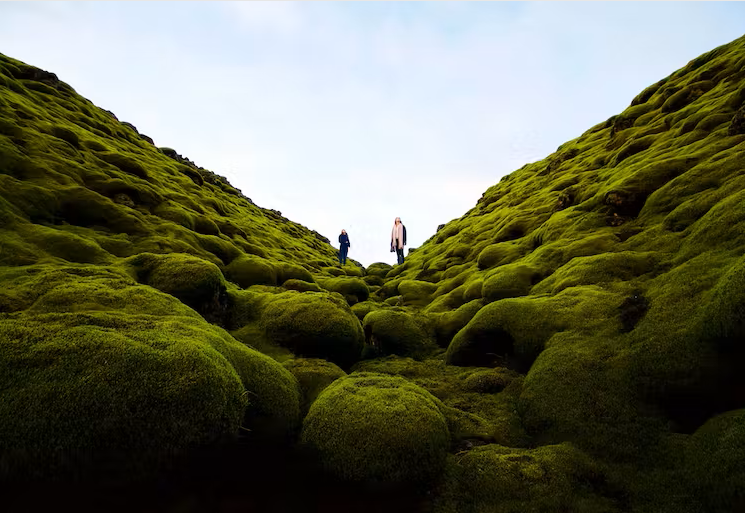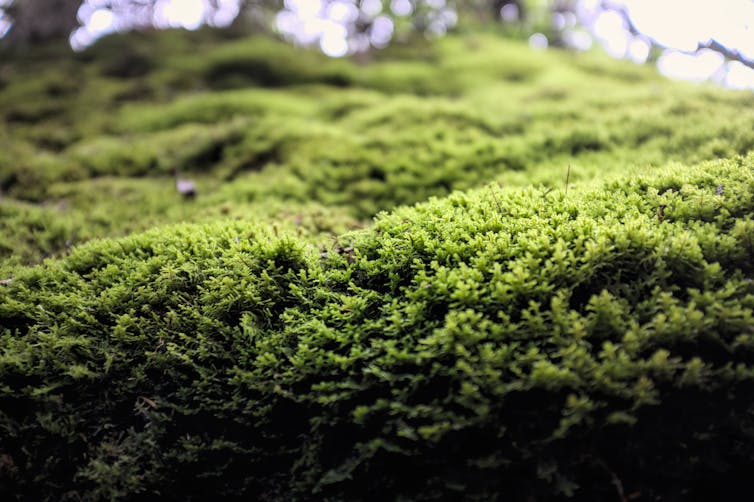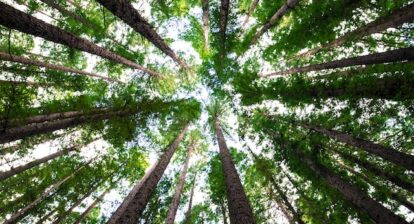An epic global study of moss reveals it is far more vital to Earth’s ecosystems than we knew
Mosses are some of the oldest land plants. They are found all over the world, from lush tropical rainforests to the driest deserts, and even the wind-swept hills of Antarctica.
They are everywhere; growing in cracks along roads and pathways, on the trunks of trees, on rocks and buildings, and importantly, on the soil.
Yet despite this ubiquity, we have a relatively poor understanding of how important they are, particularly the types of moss that thrive on soil.
New global research on soil mosses published in Nature Geoscience reveals they play critical roles in sustaining life on our planet. Without soil mosses, Earth’s ability to produce healthy soils, provide habitat for microbes and fight pathogens would be greatly diminished.
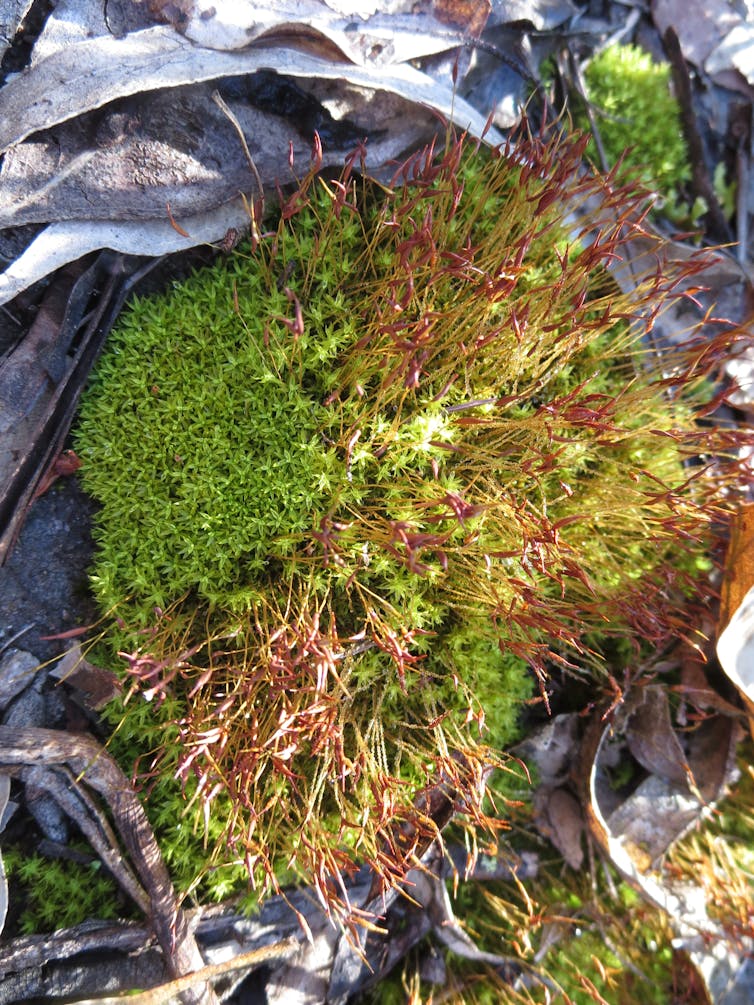
Soil moss with fruiting bodies (capsules). David Eldridge, Author provided.
A global survey of soil mosses
The results of the new study indicate we have probably underestimated just how important soil mosses are.
Using data from 123 sites across all continents including Antarctica, we show that the soil beneath mosses has more nitrogen, phosphorus and magnesium, and a greater activity of soil enzymes than bare surfaces with no plants.
In fact, mosses affect all major soil functions, increasing carbon sequestration, nutrient cycling and the breakdown of organic matter. These processes are critical for sustaining life on Earth.
Our modelling revealed that soil mosses cover a huge area of the planet, about 9 million square kilometres – equivalent to the area of China. And that’s not counting mosses from boreal forests, which were not included in the study.
The strength of the effect mosses have on soil depends on their growing conditions. They have the strongest effect in natural low productivity environments, such as deserts. They are also more important on sandy and salty soils, and where rainfall is highly variable.
Not unexpectedly, mosses have the strongest effects on soils where vascular plants – those that contain specialised tissues to conduct water and minerals – are sparse.
An intimate connection
Mosses lack the plumbing that allows vascular plants to grow tall and pull water from beneath the soil. This keeps them relatively short, and means they develop an intimate connection with the uppermost soil layers.
Mosses are extremely absorbent and can attract airborne dust particles. Some of these particles are incorporated into the soil below. It is not surprising then that they have such a strong effect on soils.
Our modelling shows that, across the globe, mosses store 6.4 gigatonnes more carbon than soils without plant cover.
Losing just 15% of the global cover of soil mosses would be equivalent to global emissions of carbon dioxide from all land use changes over a year, such as clearing and overgrazing.
Not all mosses are equal
We also found some mosses are more effective at promoting healthy soils than others. Long-lived mosses tended to be associated with more carbon and greater control of soil pathogens.
The ability of mosses to provide ecosystem services and support a diverse community of microbes, fungi and invertebrates was strongest in locations with a high cover of mat- and turf-forming mosses such as Sphagnum, which are widely distributed in boreal forests.
Soils are a huge reservoir of soil pathogens, yet the soil beneath mosses had a lower proportion of plant pathogens. Mosses can help to reduce the pathogen load in soils. This ability may have originated when mosses evolved as land plants.
A special group in the desert
A special type of moss flourishes in deserts. They either live hard (perennial mosses) or die young (annual mosses).
Mosses in the family Pottiaceae are uniquely suited to life under dry and inhospitable conditions. Many have specialised structures that allow them to survive when water is scarce. These include boat-shaped leaves with long hairy tips that help to funnel water into the centre of the plant. Some mosses twist around their stem to reduce the area exposed to the sun and conserve moisture.
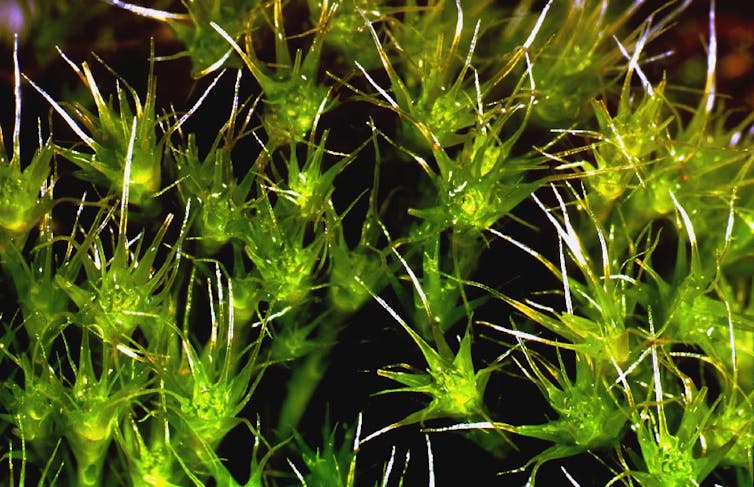
Long hair points on the leaves of Campylopus sp. David Eldridge, Author provided
Desert mosses also protect the soil against erosion, influence how much water moves through the upper layers and even alter the survival chances of plant seedlings.
Other mosses have special moisture-absorbing cells (papillae) that swell up and provide them with a moisture reserve when conditions are dry.
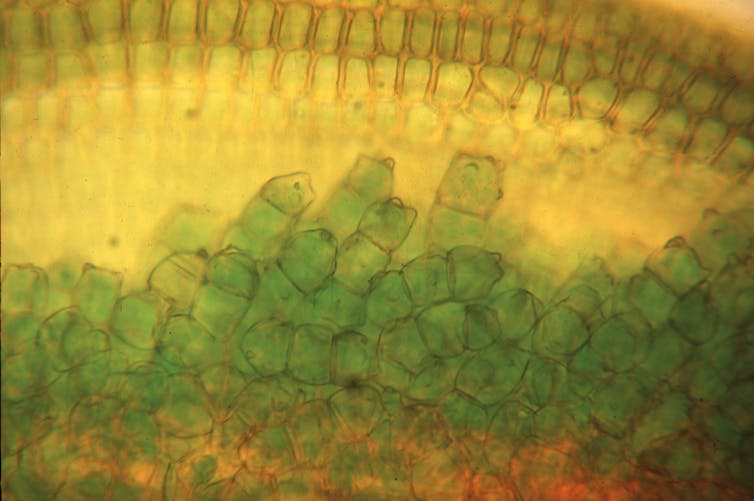
Papillae on the leaf of the moss Crossidium davidai. David Eldridge, Author provided
Our global study showed that mat- and turf-forming mosses such as Sphagnum had the strongest positive effects on the diversity of microbes, fungi and invertebrates, and on critical services such as nutrient supply. Predictably, longer-lived mosses supported more soil carbon and had greater control of plant pathogens than short-lived mosses.
Protect the mosses
Overall, our work shows mosses influence important soil processes and function in the same way vascular plants do. Their effects may not be as strong, but their total cover means mosses are potentially as significant when summed across the whole globe.
But mosses are under increasing threats globally; disturbance by livestock, overharvesting, land clearing and even changing climates are the greatest threats.
We need a greater acknowledgement of the services that soil mosses provide for all life on this planet. This means greater education about their positive benefits, identifying and mitigating the main threats they face, and including them in routine monitoring programs.
Soil mosses are everywhere, but their future is far from secure. They are likely to play increasingly important roles as vascular plants decline under predicted hotter, drier and more variable global climates. ![]()
This article is republished from The Conversation under a Creative Commons license. Read the original article.
